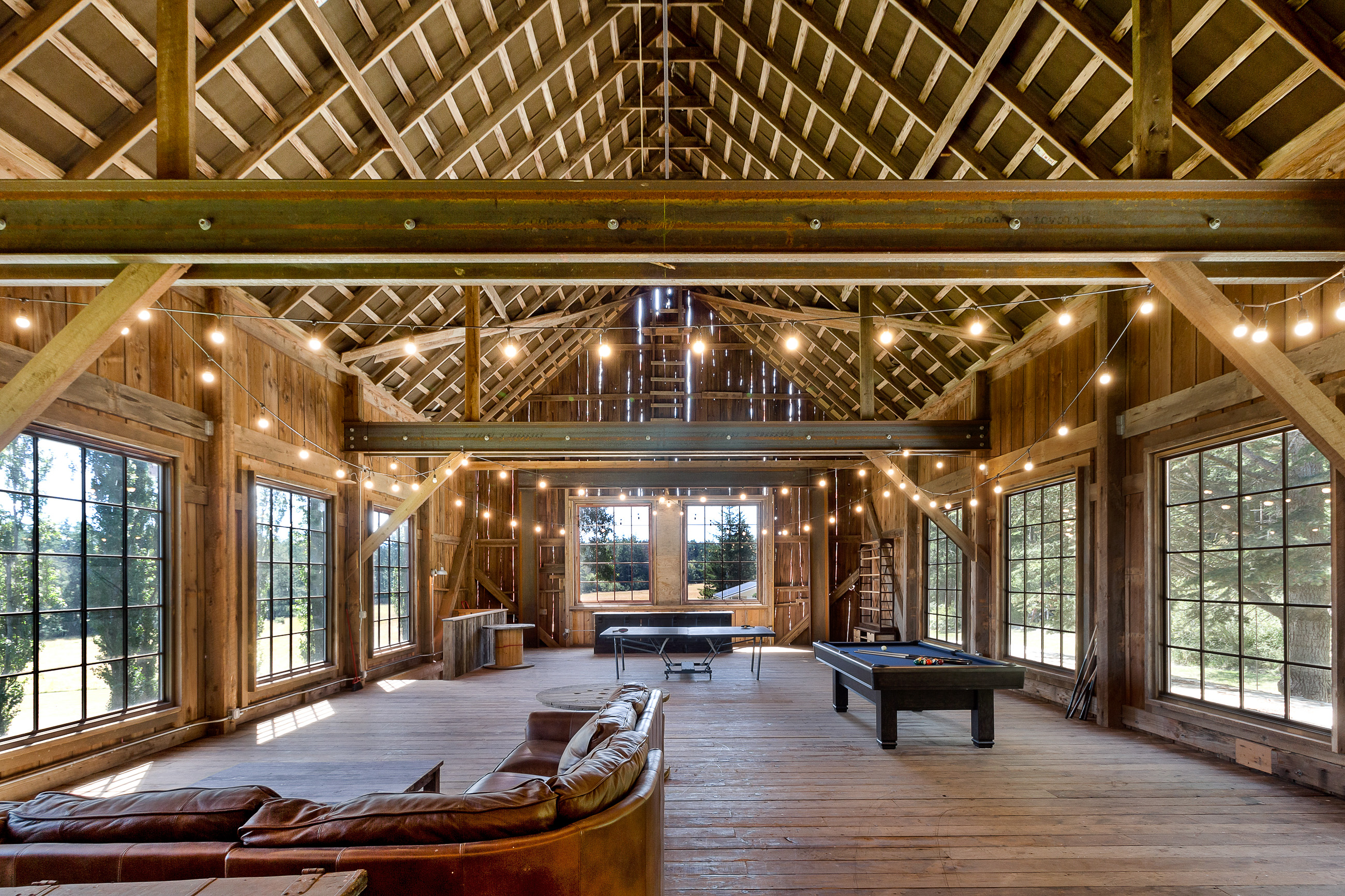 The word barn derives from combining the word barley with the Old English ern, which meant place of. For centuries the word was bern; it has been barn since the Late Middle Ages. Over the centuries a barn’s uses have expanded way beyond barley storage. Today, a barn can also be a place of tools and seedling, cars and carpentry, hay and animals, play and puttering. Or, once you clean them up, sheathe them, and add a few comforts for creatures of a very different kind, barns can actually make great houses.
The word barn derives from combining the word barley with the Old English ern, which meant place of. For centuries the word was bern; it has been barn since the Late Middle Ages. Over the centuries a barn’s uses have expanded way beyond barley storage. Today, a barn can also be a place of tools and seedling, cars and carpentry, hay and animals, play and puttering. Or, once you clean them up, sheathe them, and add a few comforts for creatures of a very different kind, barns can actually make great houses.
Renovating a barn to a living space may not be all that complicated, but creating modern homes from fallow barns involves a lot more than just hauling out the rusty junk, brushing aside some cobwebs and cow manure, and hanging drywall. Still, despite their often derelict condition, there is truly a romance to these rustic structures that makes one yearn to reinvent them as habitable homes.
It is not difficult to see why old barns inspire the imagination. The high-peaked timber shaped beams and the rich patina of centuries-old boards have a quintessentially American feeling, connecting us to our pioneer roots. The appeal of soaring spaces.
Whether you plan to use your barn to keep animals, make a work-shop, or just add storage space for the stuff that has been accumulating in your yard, one general-purpose design can fit many of these varied uses.
An elaborate and rather rigid system for building structures has evolved in our society. All of us who would build are almost obliged to adopt this system as our own. The more obedient to the system we become, the less variety is available, the less creativity is expressed, the less we are able to change with changing times.
Break from the system — use your brains and not your billfolds to create structures that are affordable, individual, and even safer and more efficient than the mass-produced mundanities of the established construction industry.
Take one old barn and call it home!
 Facebook
Facebook
 X
X
 Pinterest
Pinterest
 Copy Link
Copy Link
